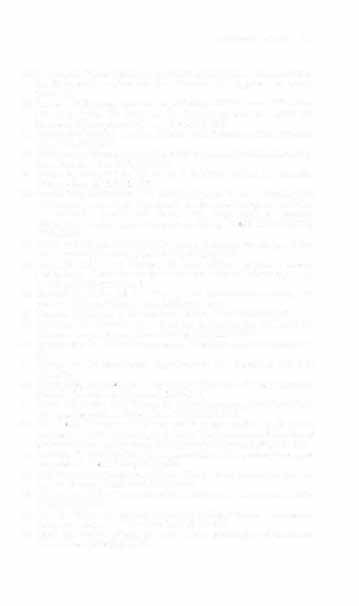i bc27f85be50b71b1 (216 page)
Read i bc27f85be50b71b1 Online
Authors: Unknown
692
AClITE CARE HANDBOOK FOR PHYSICAL ntERAPISTS
ron ate, or intravenous pamidronare). Other bisphosphonates
currently under investigation include zoiedronare and ibandronate.52
Other interventions can include the foliowing47•S2:
•
Administration of calcitonin
•
Calcium supplementation (if necessary)
•
Promotion of mobility
•
Adequate hydration
•
Sympromatic relief with nonsteroidal anti-inflammatory agents
or acetaminophen
Management
Clinical management of endocrine dysfunction is discussed earlier in
specific endocrine gland and metabolic disorders sections. This section focuses on goals and guidelines for physical therapy intervention.
The following arc general physical therapy goals and guidelines for
working with patients who have endocrine or metabolic dysfunction.
These guidelines should be adapted ro a patient's specific needs. Clinical tips are provided earlier ro address specific situations in which the tips may be most helpful.
Coals
The primary physical therapy goals in this patient population are the
following: (1) ro optimize functional mobility, (2) ro maximize activity tolerance and endurance, (3) to prevent skin breakdown in the patient with altered sensation (e.g., diabetic neuropathy), (4) to
decrease pain (e.g., in patients with osteoporosis or hyperparathyroidism), and (5) to maximize safety for prevention of falls, especially in patients with altered sensation or muscle function.
Cuide/i1les
Patients with diabetes or osteoporosis represent the primary patient
population with which the physical therapist intervenes. Physical


ENDOCRINE SYSTEM
693
therapy considerations for these patients are discussed in the form of
clinical tips in earlier sections (Diabetes and Osteoporosis, respectively).
For other patients with endocrine or metabolic dysfunction, the
primary physical therapy treatment guidelines are the following:
l .
To improve activity tolerance, it may be necessary to decrease
exercise inrensiry when the patient's medication regimen is being
adjusted. For example, a patient with insufficient thyroid hormone
replacement will fatigue more quickly than will a patient with adequate thyroid hormone replacement. In this example, knowing the normal values of thyroid hormone and reviewing the laboratory tests
helps the therapist gauge the appropriate treatment intensity.
2.
Consult with the clinical nutritionist to help determine the
appropriate activity level based on the patient's caloric intake,
because caloric intake and metabolic processes are affected by endo·
crine and metabolic disorders.
References
I. Burch WM (cd). Endocrinology for the House Officer (2nd ed). Baltimore: Williams & Wilkins, 1988.
2. Bullock BL (cd). Pathophysiology: Adaptations and Alterations in Func·
tion (4th cd). Philadelphia: Lippincott, 1996.
3. Diagnostic Procedures. In JM T hompson, GK McFarland, JE Hirsch, er
al. (eds), Mosby's Manual of Clinical Nursing Practice (2nd ed). St.
Louis: Mosby, 1989;1594.
4. Corbett jV. Laboratory Tests and Diagnostic Procedures with Nursing
Diagnoses (5th ed). Upper Saddle River, NJ: Prentice Hall Health, 2000.
5. Malarkey LM, McMorrow ME (eds).
urse's Manual of Laboratory
Tesrs and Diagnostic Procedures. Philadelphia: Saunders, 2000j604-
612.
6. Sacher RA, McPherson RA, Campos JM (eds). Widman's Clinical lmer·
pretation of LaboralOry Tests ( I I th cd). Philadelphia: FA Davis, 2000;
741-823.
7. Lavin N (ed). Manual of Endocrinology and Metabolism (2nd cd). Bosron: Linle, Brown, 1994.
8. Allen MA, Boykin PC, Drass JA, et al. Endocrine and Metabolic Systems. In JM Thompson, GK McFarland, JE Hirsch, et al. (eds), Mosby's Manual of Clinical Nursing Practice (2nd cd). Sr. Louis: Mosby, 1989;
876.
9. Waeber KA. Updace on the management of hyperthyroidism and
hypothyroidism. Arch Intern Med 2000; 160(8):1067.

694 AClITE CARE HANDBOOK FOR PHYSICAL THERAPISTS
1 0. EHim B. Diagnosing and Treating Hypmhyroidism. Nurse Pract
2000;25(3):92.
I I . Harrog M (ed). Endocrinology. Oxford, UK: Blackwell Scientific, 1 987.
1 2. Hershman JM (ed). Endocrine Pathophysiology: A Pa.ient-Oriented
Approach (3rd ed). Philadelphia: Lea & Febiger, 1 988;225.
1 3. Woolf N. Pathology, Basic and Systemic. London: Saunders, 1998;820-
873.
]4. Drug therapy usually secondary to surgery in the treatment of pituitary
adenomas. Drug T her Perspect 200 1 ; 1 7(3):5- 1 0.
1 5. Terpstra TL, Terpstra TL. Syndrome of inappropriate anridiuretic hormone secretion: recognition and management. Medsurg Nurs 2000; 9(2): 6 1 .
1 6. Beers MH, Berkow R (eds). Merck Manual of Diagnosis and Therapy
( 1 7th ed). Whitehouse S.ation, NJ: Merck, 1999.
17. Burch WM (ed). Endocrinology for the House Officer (3rd ed). Baltimore: Williams & Wilkins, 1 994;97.
18. Wand GS. Pituitary Disorders. In JD Stobo, DB Hellmann, PW Ladenson, et al. (eds), The Principles and Practice of Medicine (23rd ed).
S.amford CT: Appleton & Lange, 1 996;274-2 8 1 .
1 9. Heater OW. Diaberes insipidus. R N 1 999;62(7):44.
20. Malarkey LM, McMorrow ME (cds). Nurse's Manual of Laborarory
Tests and Diagnostic Procedures. Philadelphia: Saunders, 2000;6 1 9-
620.
2 1 . Malarkey LM, McMorrow ME (cds). Nurse's Manual of Laboratory
Tests and Diagnostic Procedures. Philadelphia: Saunders, 2000;564-
566, 570-57 1 .
22. Malarkey LM, McMorrow M E (eds). Nurse's Manual of Labora.ory
Tests and Diagnostic Procedures. Philadelphia: Saunders. 2000;555-
556.
23. Black JM, Matassarin-Jacobs E (eds). Luckmann and Sorensen's Medical Surgical Nursing: A Psychophysiologic Approach (4th ed). Philadelphia: Saunders, 1 993.
24. Baker JR Jr. Autoimmune endocrine disease. JAMA 1997;278(22):
193 1 -1937.
25. Wand GS, Cooper OS. Adrenal Disorders. In JD Stobo, DB Hellmann,
PW Ladenson, et al. (eds), The Principles and Practice of Medicine (23rd
ed). Stamford, CT: Appleton & Lange, 1 996;282-292.
26. Krasner AS. Glucoconicoid·jnduced adrenal insufficiency. JAMA 1 999;
282(7):67 1 .
27. Kizer JR, Koniaris jS, Edelman JD, et al. Pheochromocytoma crisis, cardiomyopathy, and hemodynamic collapse. Chest 2000; 118(4): 122 1 .
28. 0 ' Connell CB. A young woman with palpitations and diaphoresis. Physician Assistant 1999;23(4):94.
29. McCance KL, Huether SE (eds). Pathophysiology: The Biologic Basis for
Disease in Adults and Children (2nd ed). St. Louis: Mosby, 1 994;674.
30. Repon of the Expert Committee on the Diagnosis and Classification of
Diaberes Mellitus. Diabetes Care 200 I ;24( I ):S5.
3 1 . Olefsky JM. Prospects for research in diabetes mellitus. JAMA 200 1 ;
285(5):628.


ENDOCRINE SYSTEM
695
32. Lorenzi, M. Diabetes Mellitus. In PA Fitzgerald (cd), Handbook of Clin·
ical Endocrinology (2nd ed). East Norwalk, CT: Appleron & Lange,
1 992;463.
33. Saudek CD. Diabetes Mellitus. In JD Srobo, DB Hellmann, PW Ladenson, et al. (cds), The Principles and Practice of Medicine (23rd cd).
Stamford, CT: Appleron & Lange, 1996;32 1-3 3 1 .
34. Standards o f medical care for patients with diabetes mellitus. Diabetes
Care 2001;24(1 ):533.
35. Nutrition recommendarions and principles for people with diaberes mellitus. Diabetes Care 200 I ;24( I ):544.
36 Zinran B, Ruderman N, Phil O, er al. Diabetes mellitus and exercise.
Diaberes Care 200 I ;24( 1 ):551
37. Saudek CD, Duckworth \'(fC, Giobbie-Hurdcr A, et al. Implamable
insulin pump vs multiple·dose insulin for non·insulin dependent diabe·
tes mellitus: a randomized clinical trial. Deparrmem of Veterans
Affairs Implantable Insulin Pump Srudy Group. JAMA I 997;276( 1 6):
1 322-1 327.
38. Cefalu WT. Inhaled human insulin trearmeO[ in patiems with type 2 diabetes mellitus (Abstract). JAM A 200 I ;285(12): 1559.
39. Skyler J , Cefalu WT, Kourides lA, et al. Efficacy of inhaled human
insulin in type I diabetes mellitus: a randomised proof·of·concept study.